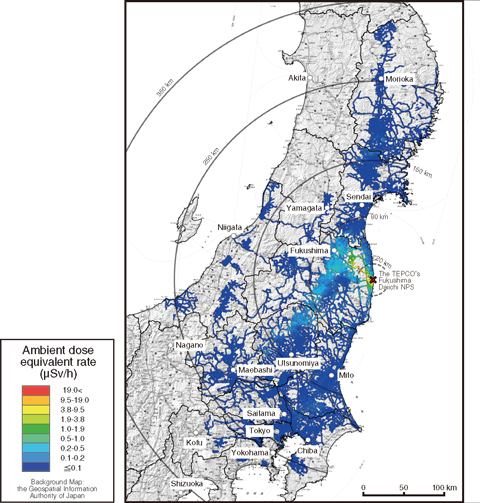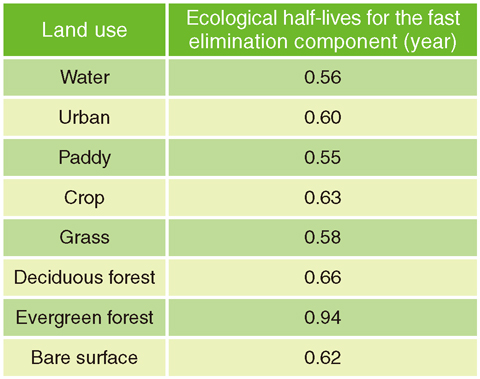
Fig.1-4 A map of ambient dose equivalent rates through vehicle-borne surveys
Table 1-1 Ecological half-lives for the fast elimination component (median)

To support a rehabilitation program after the accident at the TEPCO’s Fukushima Daiichi NPS, prediction models have been developed to assess how ambient dose-equivalent rates obtained from the radioactive cesium (Cs) deposited on the ground might change in future. The prediction models were expressed using calculation formulae characterized by ecological half-lives for the fast/slow elimination components. The prediction models can provide information on the time-variation of the ambient dose-equivalent rates for land use. The ecological half-life is defined as the time for the ambient dose-equivalent rate to be halved due to natural removal phenomena and human activities.
In Western countries, ecological half-lives were evaluated after atmospheric nuclear tests and the accident at the Chernobyl Nuclear Power Plant. However, it is not clear yet whether these ecological half-lives are applicable in Japan. We evaluated ecological half-lives for the fast elimination component using ambient dose-equivalent rates through eight vehicle-borne surveys conducted from June 2011 to August 2014 (Fig.1-4). The ecological half-lives for land use were analyzed on the basis of a statistical method. The ecological half-life for the slow elimination component was assumed to be the same regardless of land use as it is well-known to be 45-135 year and is not easily evaluated using the data obtained within several years after the accident.
We found that the ecological half-lives for the fast elimination component in deciduous and evergreen forest areas are longer than those in other areas. In many areas other than deciduous and evergreen forests, the ecological half-lives were found to be approximately 0.55-0.63 year (Table 1-1). Our findings indicate that radioactive Cs in forest areas is unlikely to flow out into surrounding areas. Hence, a rehabilitation program in forest areas is an important issue as there are large forest areas in Fukushima Prefecture.
The present study was sponsored by the Secretariat of the Nuclear Regulation Authority (NRA).
<Previous: 1 Research and Development Related to the Accident at TEPCO’s Fukushima Daiichi NPS | Next: 1-2 >